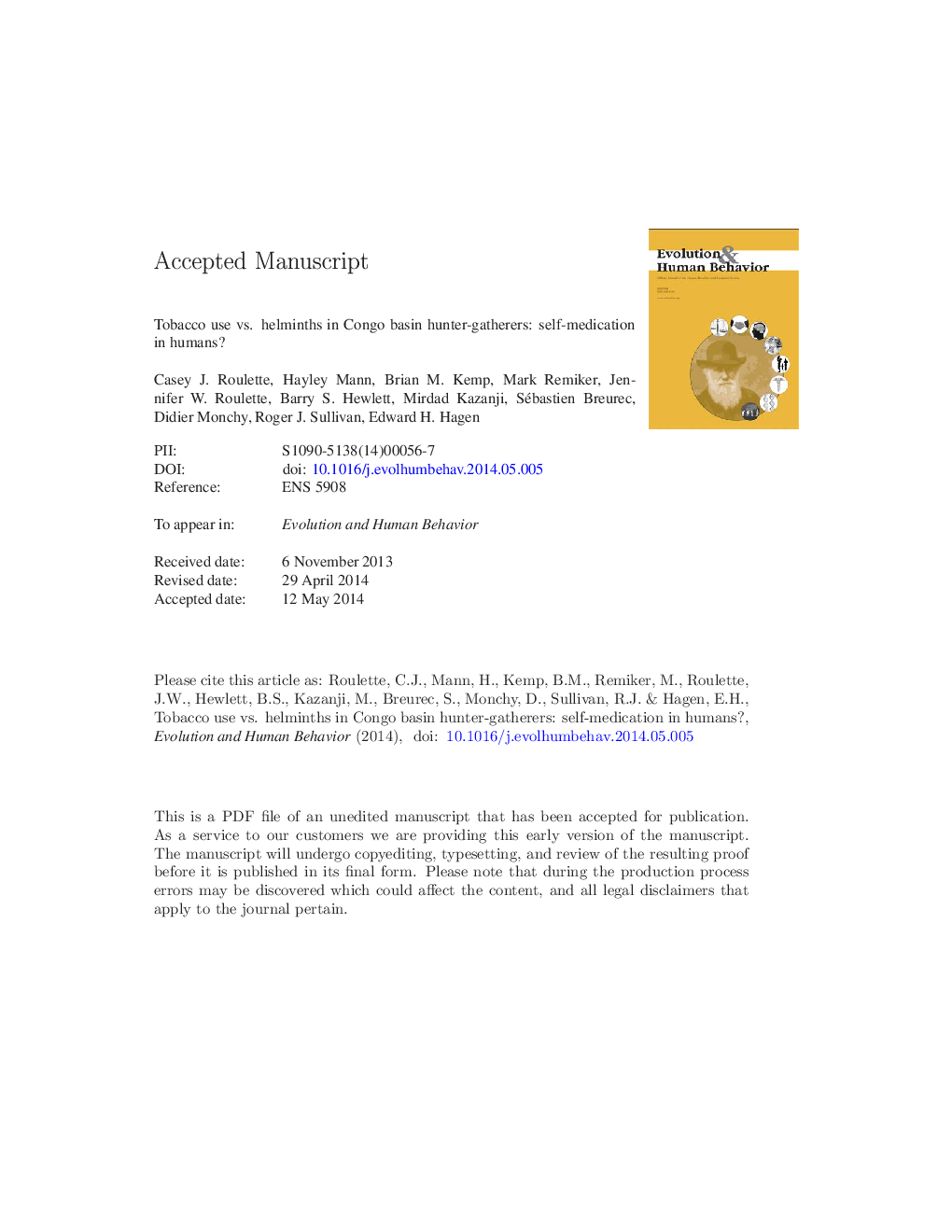| Article ID | Journal | Published Year | Pages | File Type |
|---|---|---|---|---|
| 10464006 | Evolution and Human Behavior | 2014 | 58 Pages |
Abstract
We tested a novel hypothesis that recreational use of neurotoxic plants helps defend against parasites. Specifically, we investigated the relationship between smoking and helminthiasis among the Aka, a remote population of Central African foragers who are avid tobacco smokers, suffer high rates of helminthiasis, and have little-to-no access to commercial anthelmintics. Two hundred and six healthy Aka men provided saliva and stool samples. Saliva samples were assayed for cotinine, a nicotine metabolite; a subsample was genotyped for the CYP2A6 enzyme, which metabolizes nicotine. Stool samples were assayed for intestinal helminth eggs as an index of worm burden. After 1Â year, a subsample of participants was located and provided additional saliva and stool samples. We found (1) an exceptionally high prevalence of tobacco use, (2) a significant negative correlation between cotinine (a nicotine metabolite) and worm burden, (3) that treating helminths with albendazole, a commercial anthelmintic, reduced cotinine concentration two weeks later, compared to placebo controls, (4) among treated participants, higher cotinine concentrations in year 1 predicted less reinfection by year 2, and (5) younger and older participants with slow nicotine-metabolizing CYP2A6 alleles had lower worm burdens compared to those with extensive metabolizing alleles. These results provide the first evidence of a link between helminthiasis and smoking. They also suggest that, in populations where intestinal helminths are endemic, tobacco use might protect against helminth infection and reduce worm burden among infected individuals, and that individuals modulate nicotine exposure in response to infection. The results thus support the hypothesis that substance use helps defend against parasites.
Related Topics
Life Sciences
Agricultural and Biological Sciences
Ecology, Evolution, Behavior and Systematics
Authors
Casey J. Roulette, Hayley Mann, Brian M. Kemp, Mark Remiker, Jennifer W. Roulette, Barry S. Hewlett, Mirdad Kazanji, Sébastien Breurec, Didier Monchy, Roger J. Sullivan, Edward H. Hagen,
